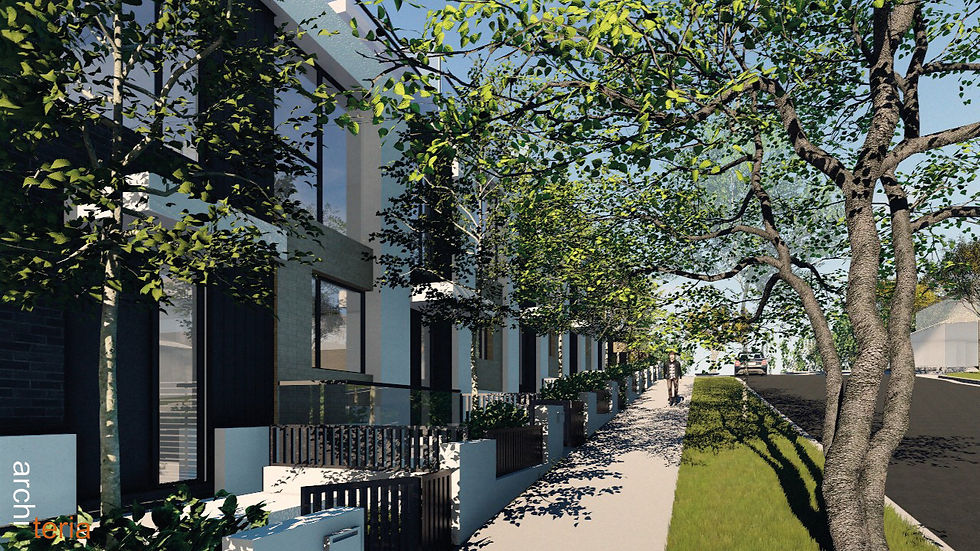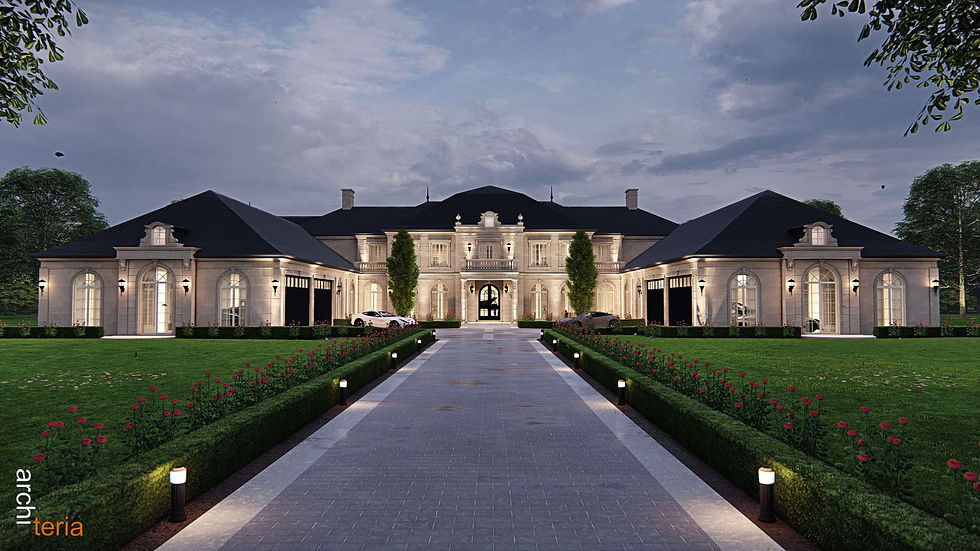THE IMPORTANCE OF ARCHITECTS ENGAGING THE COMMUNITY IN THE TOWN-PLANNING PROCESS
- Architeria Architects

- Sep 9, 2018
- 4 min read
Updated: Nov 21, 2024
Unless a Council is completely satisfied that a proposal is not causing material harm or loss to any person, most of town-planning applications need to be publicly advertised. The usual procedure for a Public Notice is sending letters to property owners in the vicinity, sign boards on the site and/or notices in the paper.
When a Public Notice goes out to the community for a development proposed in the neighbourhood, the likelihood is that not everyone will be happy about the proposal. This is particularly true when a larger scale development such as apartment buildings or multi- unit development is proposed not to mention developments with religious use or any use that refers to activities where alcohol will be served.

Part of human nature is to react when anything interferes with our immediate needs. If we feel that our living environment is being changed or challenged or compromised in any way it is natural to have a negative reaction. When a development is proposed, the Council may arrange a general information meeting where plans are being displayed for the public to browse through. The architects and town planners involved are attending and are there, together with the Council to answer questions, concerns and queries that the public may have. Many times these meetings trigger fear and anger from the public and sometimes hostility directed towards both the Council representatives and the professionals involved in the design and planning. No doubt, this is a challenging situation for both parties on either side. The right to submit any kind of planning application remains as a right for developers and architects and there are planning schemes that regulate what can and cannot be built on a site. Architects are generally working very well within these planning schemes to ensure that they are met and are complying with the relevant ResCode and standards.

Rather than demonstrating the rights of a proposal to potential objectors, we have found that a different approach and engagement with the community can reduce the stress of these Council meetings. The way of addressing the potential objectors can have a huge impact on the number of objections that a development can have. Many neighbours have repeatedly told us that they get frustrated when they feel unheard, and neglected by architects and developers.
The most common concerns are the impact that a development has on traffic, overshadowing or overlooking issues, blocked views, noise and number of car parks provided. Many of these concerns can be avoided by following the planning scheme and its clauses but they may still be issues for the public. We always strive to listen to each and every one of the potential objectors, if they require further explanation we often invite them to the office to discuss and offer solutions and alternative ways of looking at these issues. We find it important that no one who attends these public meetings leaves without having their concerns addressed and we aim to give time for all attendees to thoroughly understand what their concerns are and offer our opinion on these. We also try to highlight real concerns and try to eliminate misconceptions by clearly explaining the proposal.
At Architeria Architects, we believe that by being transparent, and by using aids such as 3D animations of the development to help people visualise what is happening in their neighbourhood often helps putting peoples mind to ease as sometimes when we only see plans and elevations and facts and figures, these can be misinterpreted and look far more intimidating than they really are.

Other times, some people may be aware of that their concerns can be overruled or considered as irrelevant as some things are simply not taken into account when an application is considered. For instance, it is not a relevant objection that the proposed development might reduce your house value and it is not relevant who the potential new tenants or buyers may be. These objections are irrelevant. The council would not support an objection that is a matter of opinion either such as someone’s personal taste in what is beautiful or ugly. This can cause frustration for the objectors.
As a golden rule, let people talk. Let them ventilate their feelings, their frustration and fear. Let them be heard. Sometimes facing our concerns and wording them out loud can help and getting someone else’s opinion and outlook on these concerns can take the edge of our own concerns.

We believe that an architect’s role does not stop by designing efficient housing that satisfies the number of units that can be put on a site. We need to weigh pros and cons of potentially having our town-planning application ending up at VCAT and dragging for months, costing both time and money. There is a balance that needs to be achieved by meeting the developer’s vision and this is to try and meet the design objectives to assure a smooth town-planning process.
There is no other, more effective way to avoid objections than putting yourself in the shoes of the potential objectors. When you look at these people as your family, neighbours and friends, their concerns become your concern.
Efficiency in design can often be solved by different creative means to make up for lost square metres allowing for a private open space and as long as we, as architects, are committed to meet both ends; we can make way for a stress-free planning application process with satisfactory outcome for both client and neighbour.
If you require further information on the planning application process, or if you wish to discuss a new project that requires planning application please call Architeria Architects on 03 9894 5805.





Comments